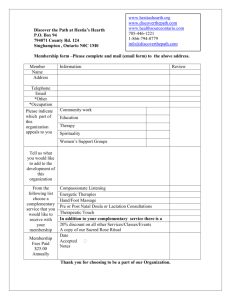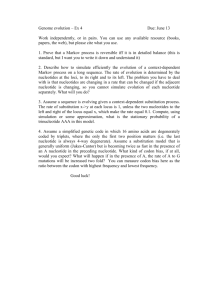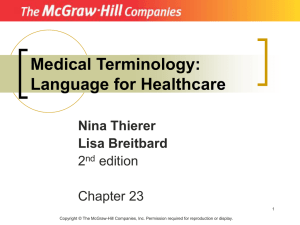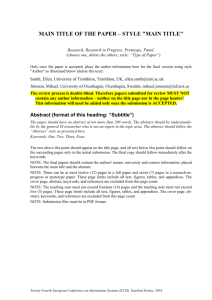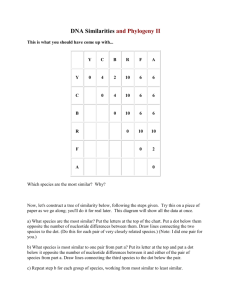Problem Set 6 Nucleotides and Nucleic Acids
advertisement
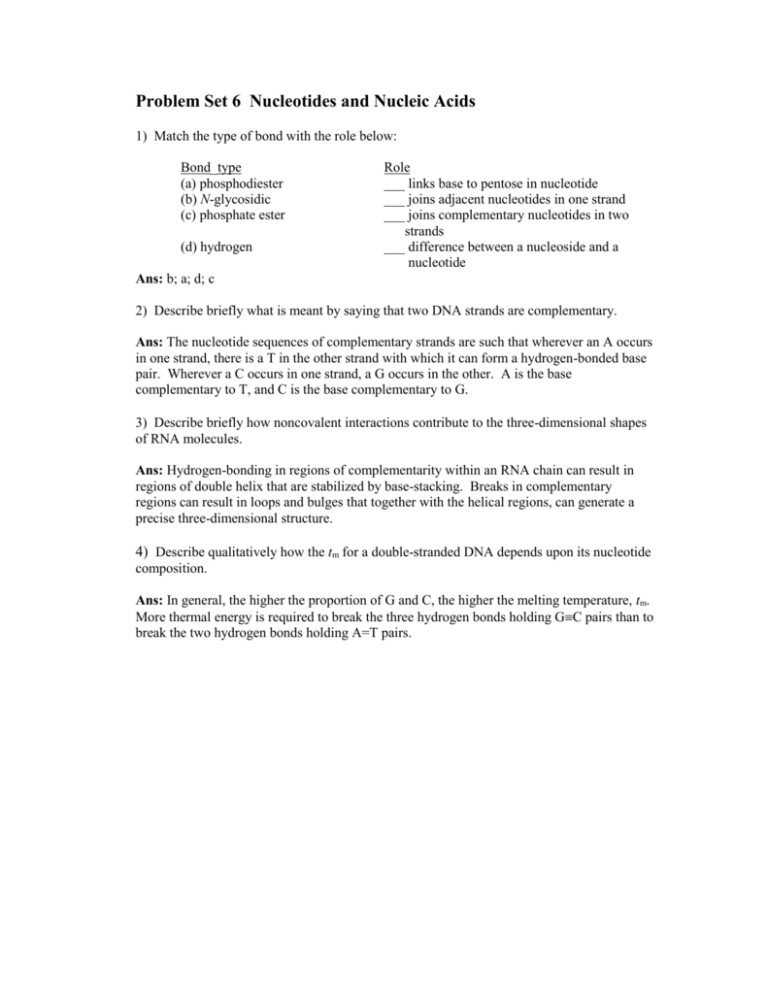
Problem Set 6 Nucleotides and Nucleic Acids 1) Match the type of bond with the role below: Bond_type (a) phosphodiester (b) N-glycosidic (c) phosphate ester (d) hydrogen Role ___ links base to pentose in nucleotide ___ joins adjacent nucleotides in one strand ___ joins complementary nucleotides in two strands ___ difference between a nucleoside and a nucleotide Ans: b; a; d; c 2) Describe briefly what is meant by saying that two DNA strands are complementary. Ans: The nucleotide sequences of complementary strands are such that wherever an A occurs in one strand, there is a T in the other strand with which it can form a hydrogen-bonded base pair. Wherever a C occurs in one strand, a G occurs in the other. A is the base complementary to T, and C is the base complementary to G. 3) Describe briefly how noncovalent interactions contribute to the three-dimensional shapes of RNA molecules. Ans: Hydrogen-bonding in regions of complementarity within an RNA chain can result in regions of double helix that are stabilized by base-stacking. Breaks in complementary regions can result in loops and bulges that together with the helical regions, can generate a precise three-dimensional structure. 4) Describe qualitatively how the tm for a double-stranded DNA depends upon its nucleotide composition. Ans: In general, the higher the proportion of G and C, the higher the melting temperature, tm. More thermal energy is required to break the three hydrogen bonds holding GC pairs than to break the two hydrogen bonds holding A=T pairs.
